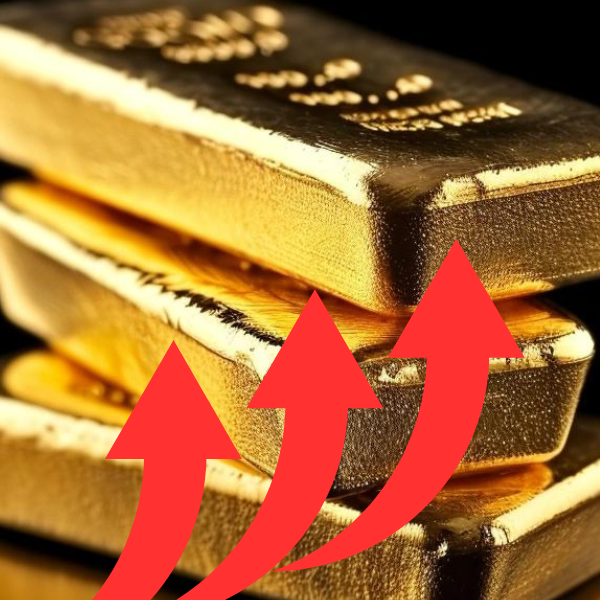Gold as Part of Gresham’s Law for Interest Rates – Prof. Fischer
THE MATTERHORN INTERVIEW – 1 December, 2013: Prof Tom Fischer
“Gold as Part of Gresham’s Law for Interest Rates”
Financial journalist Lars Schall talked with German academic Tom Fischer, a financial mathematician, about the phenomenon why gold’s usual state of contango suggests central bank interference. Moreover, they took a look at the issue of the paper vs the physical gold market, and discussed other issues related to the precious metal markets, such as the gold-silver ratio.
 Dr. Tom Fischer is Professor of Stochastic Financial Mathematics at the University of Wuerzburg, Germany. His research interests lie in the areas of asset and derivative pricing, systemic risk, risk capital allocation and FX risk management. Besides his academic interests, Mr. Fischer is the scientific head behind the FX Risk Management tool, which was developed by the risk management firm Approximity. He closely follows the precious metals markets, and besides appearances of his related work in the press, he has developed proprietary models for these markets. He is a member of the German Association for Actuarial and Financial Mathematics (DGVFM) and the German Risk Management Association (RMA e.V.).
Dr. Tom Fischer is Professor of Stochastic Financial Mathematics at the University of Wuerzburg, Germany. His research interests lie in the areas of asset and derivative pricing, systemic risk, risk capital allocation and FX risk management. Besides his academic interests, Mr. Fischer is the scientific head behind the FX Risk Management tool, which was developed by the risk management firm Approximity. He closely follows the precious metals markets, and besides appearances of his related work in the press, he has developed proprietary models for these markets. He is a member of the German Association for Actuarial and Financial Mathematics (DGVFM) and the German Risk Management Association (RMA e.V.).
Lars Schall: Prof Fischer, a disclaimer early on: why are you a gold and silver investor?
Tom Fischer: I simply want to preserve my capital in what I consider to be the greatest financial crisis this world has ever seen. At the same time, I want to stay financially liquid and maybe even make some profit. The obvious choice – to me – is the two monetary precious metals.
LS: As a gold investor you have developed a proprietary stochastic gold price model for the risk management firm Approximity. Please, explain.
TF: Obviously, I cannot say too much. The idea is based on one of my favorite economic indicators, which is the Dow Jones Industrial Average divided by the price of gold. There seems to exist a long-term cyclical relationship between these two real objects: a share of the American industry, and one ounce of gold. So, if you have a model for the Dow Jones, and you have one for that Dow-gold cycle too, you will end up with a model for gold. That is what we did.
LS: Which of the two markets do you consider to be more difficult to analyze: the gold or the silver market?
TF: Clearly silver.
LS: And why?
TF: Gold always pushes silver around, but silver is too small to do that with gold. So, for silver, you on the one side have the actual industrial demand, which is substantial, and partially gives silver the characteristic of a classic commodity. On the other side, you also have this strong influence of gold on the silver price. But gold is much more macroeconomic – a world currency, if you want, and difficult enough to analyze on its own. These two components make silver particularly tricky.
LS: Do you think silver has a fair chance to become the investment of this decade? And where do you see the gold-silver ratio heading in the long run?
TF: In May 2011, silver looked pretty much like the investment of the last decade! But then, and despite of the promptly following price decline and the much lower prices today, we had not even outdone the nominal 1980s high. Inflation-adjusted prices back then were around 140 Dollars. Of course, we all know that 1980 was a very brief and extreme situation, but it shows what silver is capable of doing. I think silver will outperform gold, based on 1999 prices, in a coming extreme, which I expect to happen before the end of the decade.
The major trend for gold-silver since 1990 has been down, but in a very volatile manner. I think that before the end of the decade we will see the gold-silver ratio go down to 20-to-1, maybe lower, for two simple reasons: One, when gold is doing very well, silver, as the smaller market, acts akin to leverage on gold. Second, during the past 130 years or so, silver has revisited this ratio when it was strongest against gold. So, when things get very heated, speculators will use this historic ratio as a reference point that can be reached and has been reached before. But undoubtedly, this is going to be – and has already been – a very rough ride.
LS: Let’s turn to a paper that you’ve authored recently, “Why gold’s contango suggests central bank interference.“ (1) Now, before we discuss the possibility that there is central bank interference in the gold market; what do you think would be their motivation to do it in the first place?
TF: The number one purpose of a central bank is to manage their corresponding currency. Obviously, too high a gold price in any currency shows weakness of that currency. Similarly, high gold lease rates would show that gold was more desirable and, for borrowing purposes, less abundant than the fiat currency in question. So, if for some reason you do not have the ability or the will to take measures that would strengthen the currency in a sustainable manner, an unsustainable short term cure could be to take it out on gold. Since the currency gold has no central bank that protects it, it makes an easy target. Another reason could be that for a lack of knowledge in – or appreciation of – financial history, a central bank would consider the gold on their balance sheet a non-interest paying drag, and they would therefore try to sell it or try to lease it out.
LS: Okay, and then I need you to explain to us the terms “contango“ and “backwardation“, please.
TF: In a forward market, where prices of a good for delivery in, say, a year’s time, are determined today, “contango” means that the price of that good for immediate delivery, also called the “spot price”, is cheaper than the price of that good payable and deliverable in one year’s time. “Backwardation” is the opposite, so prices today are higher than the forward prices one year ahead. This would be the definition for a one-year maturity. Some people only want to speak of “contango” or “backwardation” if the corresponding condition applies to all maturities, but these are details.
LS: What’s the norm?
TF: For an industrial commodity, because of interest and because of storage costs, contango is considered to be the norm. So, erroneously, some people think that this should be the case for gold as well.
LS: However, you suggest that it should be exactly vice-versa. Why?
TF: Gold is not just another commodity. It historically has the role of a world currency that cannot be inflated into oblivion. It is a financial safe haven. However, for currencies like gold, the Dollar or the Euro, contango or backwardation follows from a difference in their interest rates. For instance, because of that interest rate differential, usually either the dollar is in contango towards the Euro and at the same time the Euro in backwardation to the Dollar, or vice versa. Now replace the word “Euro” by “gold” and you get the picture. So, gold is in backwardation when its interest rate, which is also called the “gold lease rate”, is higher than that of the Dollar. The question is now: why should the interest rate of gold be higher than that of the Dollar? In my opinion, the answer is obvious: gold is the much better currency, so, you should have to pay up to get a loan in it. I would call this a version of Gresham’s Law for interest rates.
LS: The New Austrian School of Economics headed by Prof. Antal E. Fekete warns against the permanent state of backwardation in gold. (2) Are they wrong in their views according to your understanding of the matter?
TF: In a freer gold market, I would expect gold to be most of the time in backwardation. I possibly agree with Fekete to that extent. What I have a problem with is that Fekete and his followership seem to think that backwardation in gold meant arbitrage – that is the opportunity to make money out of nothing. This is wrong, as I explained in my recent article “Faux Gold Arbitrage” (3). Meanwhile it has come to my attention that Fekete also uses the word “arbitrage” in a sense very different from the rest of the world. This is potentially dangerous, certainly confusing, and very unnecessary. Overall, I think that his theory of the gold basis is somewhat flawed because of a misunderstanding of basic arbitrage and change-of-numeraire concepts.
LS: So why do you think that the usual state of “contango“ suggests that central banks interfere in the market?
TF: If gold should fetch the highest interest rates and should hence be in backwardation, one has to ask why they have been so low over the past 25 years, or longer. The first suspect to go to would be central bank gold leasing. And, seriously, would it be any surprise if central banks pushed interest rates, whether of paper money or of gold, way below where they should be? It is their job, after all! It was possibly convenient for central banks, or other entities, to earn interest on gold while they considered it an otherwise useless asset.
LS: What would happen if gold was allowed to be in more or less permanent backwardation?
TF: I am not sure. One thing possibly is that it would simply be more obvious what the supreme currency is. In the end, this could spur more demand. If you are a gold investor, this is nothing to be afraid of.
LS: What are the means of interference?
TF: I mentioned the possibility of gold leasing. However, I am not an expert in actual central banking operations. So, there might be a whole range of tools, such as swaps etc., a central bank could use to achieve what they want.
LS: So you think it’s legitimate to forward central banks questions like these? (4)
TF: I generally think that in a democracy and during peacetime it is a reason for concern if a supposedly public institution keeps any non-personal information secret for an indefinite amount of time. I understand that an immediate central bank market transaction – an emergency action, if you want – is not publicized on the spot. But there should be access to such information after a certain amount of time, say one or two years. Anything else, for a public service institution, is intransparent and as such simply inappropriate and unprofessional. So, yes, asking the right questions is legitimate.
LS: What are your thoughts on the paper gold market? Can it last or will it ultimately be overwhelmed by the demand that will take place in the physical market?
TF: The COMEX usually raises margins when futures markets overheat. Jim Sinclair of JSMineset has always pointed to the possibility that high enough margin, for instance 100% margin, would effectively turn gold futures markets into cash markets. Also, concerns about failure to deliver could shrink the volume dramatically. If this happened, one could say that the physical demand had overwhelmed the paper market. I think it is possible in the not too distant future. But thismost likely would not mean that COMEX gold would disappear entirely. They might adapt.
LS: How do you perceive the different approach to gold by China and Russia compared to that of the West?
TF: Buying gold is the best thing these countries and their central banks can do to diversify their reserves away from Dollars or Euros. But you first need to have those reserves. Exporters such as China or Russia automatically fall into a different category than, say, the US. As such, it seems to be entirely natural what these countries do. But I am not sure if they are buying enough. Most of the West, however, simply cannot afford gold.
LS: With this as a background, would you argue for a full availability of the German gold reserves on German soil? (5) Isn’t that a question of monetary sovereignty?
TF: The argument for the German gold reserves sitting in New York or London has always been that this would allow an immediate market reaction in a crisis situation. Another reason, I suppose, was to have the gold out of the reach of the Russian tanks waiting behind the Iron Curtain. The latter one is history, and a crisis where the Bundesbank had to sell considerable amounts of gold seems to have never materialized. Given that, I would say, store maybe 75% home and leave the rest in New York and in London. And, yes, I do think this has to do with sovereignty and should be a consequence of a more independent German foreign policy.
LS: Will gold become a winner of the financial crisis?
TF: I think it is a winner already and it will continue to be one. My understanding of it would be that gold will outperform essentially most major market indices, currencies or asset classes over the duration of this crisis. It will preserve wealth.
LS: Thank you very much for taking your time, Prof Fischer!
SOURCES:
(1) Tom Fischer: Why Gold’s Contango Suggests Central Bank Interference, Safe Haven, November 23, 2013, here:
www.safehaven.com/article/31904/why-golds-contango-suggests-central-bank-interference
(2) Compare for example Lars Schall: Gold: Permanent Backwardation Ahead!, Interview with Antal E. Fekete, August 2011, here:
(3) Tom Fischer: Faux Gold Arbitrage – Why backwardation in gold does not imply arbitrage, Bullion Vault, September 2, 2013, here:
http://goldnews.bullionvault.com/gold-arbitrage-backwardation-090220135
(4) Lars Schall: Lots Of Questions, Few Answers, October 25, 2012, here:
(5) Lars Schall: Germany should end the secrecy and bring its gold home, October 10, 2011, here:
http://www.gata.org/node/10550″.
About Edward Maas
Edward Maas
VON GREYERZ AG
Zurich, Switzerland
Phone: +41 44 213 62 45
VON GREYERZ AG global client base strategically stores an important part of their wealth in Switzerland in physical gold and silver outside the banking system. VON GREYERZ is pleased to deliver a unique and exceptional service to our highly esteemed wealth preservation clientele in over 90 countries.
VONGREYERZ.gold
Contact Us
Articles may be republished if full credits are given with a link to VONGREYERZ.GOLD



